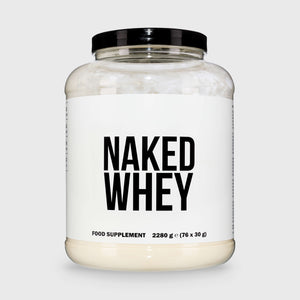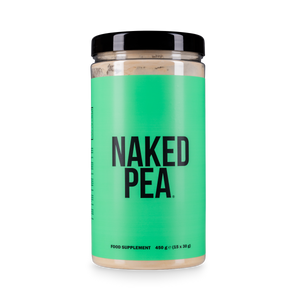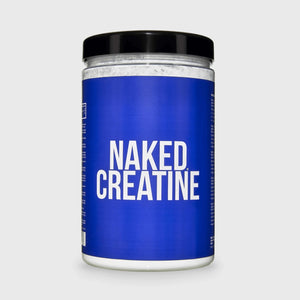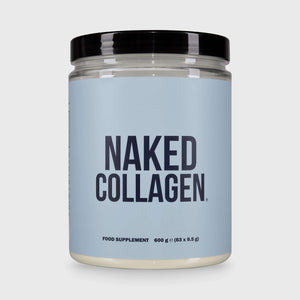The cold plunge has become one of the hottest (ironic phrasing aside) trends in health and fitness circles. You’ll rarely be able to spend a few minutes scrolling Instagram or TikTok without seeing someone post a video of them jumping into a bath of ice-cold water and claiming how amazing it is.
Besides wanting to look cool for the ‘gram, many people do cold plunge to support their workouts, as a form of active recovery, aimed at speeding up the body’s recovery rate and supporting physical adaptations from exercise.
But many people are unsure of the best time to do a cold plunge – whether it’s best before your workout, or after, and whether there are any significant differences in the benefits you get.
If this is you, keep reading, as we’ll share everything you need to know about cold plunging and the most effective time to do it.

Should You Cold Plunge Before or After Working Out?
Let’s dive right into it – when should you do a cold plunge?
The short answer is that it depends on your goals. While there’s no scientific consensus either way, it’s generally accepted that benefits for recovery are stronger if you do your cold plunge after working out.
Cold plunging aids recovery and reduces soreness by reducing inflammation in your body, particularly in your muscles, but also your joints.
Jumping into a cold bath after your workout can thus be a great way to cut down muscle soreness and discomfort you feel after a tough session.
However, there is one caveat.
Research has shown that cold immersion reduces muscle hypertrophy (aka muscle growth).
It’s believed that cold water immersion in the few hours after resistance training can counteract the adaptations from lifting weights, and limit muscle growth.
You can still make some gains, but you’ll be undoing some of your hard work (at least in terms of muscle gain).
So if you’re training to increase muscle mass, you may want to do your cold plunge before working out, or at least wait a few hours after the end of your workout (or even leave it for your rest day).
Now let’s learn a little more about cold plunging, to help you fully understand how to use it in a beneficial way.
What is a “Cold Plunge”?

Cold plunge, aka cold water immersion, is when you submerge most of your body (generally up to your neck) in cold water for a short length of time.
The specifics in terms of temperature and timing can vary. Typically, a cold plunge is between 50-59°F (10-15°C), done for anywhere from 1 to 15 minutes.
Some people push it further, turning the cold plunge into an ice bath, which can be from 39-50°F (4-10°C), and maintained for a shorter length of time.
The main criteria is that you’re getting into a cold body of water, and immersing most of your body in the water.
Cold showers, for example, have a number of benefits in their own right, but don’t work quite the same way as a full cold plunge/cold water immersion.
Potential Benefits of Cold Plunge/Ice Bath

Here are some of the reasons people brave the chill and put themselves through cold water immersion:
Reduced Inflammation & Muscle Soreness
A number of research articles have shown the benefits cold plunging has on muscle soreness and general inflammation.
This study looked at post-workout cold water immersion and found generally positive results in terms of recovery and fatigue in follow-ups between 24 to 72 hours after exercise.
Numerous additional studies [1][2][3] report similar findings, indicating the benefits for recovery from cold water immersion are real and significant.
Improved Immune Function
Multiple studies [1][2] have also reported beneficial effects on the immune system from cold water therapy (i.e. immersion in cold water).
This may be due to the same anti-inflammatory effects that make cold plunging beneficial for muscle soreness and recovery.
Increased Mental Alertness
Cold plunging can make you feel more awake, alert and mentally sharp (supported by scientific research).
This can be a reason to do a cold plunge before your workout – you may be able to stimulate a mental response and boost focus and energy, similar to the effects of a preworkout.
Increased Metabolism & Fat Loss

Cold water immersion may have a beneficial effect on metabolism, increasing fat loss.
It’s believed (and supported in some research articles) that cold exposure increases brown adipose tissue, also known as “brown fat”.
Brown fat is a healthy type of fat (as opposed to white fat, which is what we commonly think of in regards to body fat), and higher levels of brown fat result in more energy and a number of other health benefits.
Mental Health Benefits
Cold plunging may also have mental health benefits, such as decreased levels of negative emotions, and potentially reducing the symptoms of anxiety and depression.
Studies have found moderately beneficial results that back up these claims, though there is still more research needed to fully understand the effects of cold plunge on mental health.
Are There Any Risks or Downsides to Cold Plunging?

Cold plunging has some risks and potential downsides, which we need to discuss as well. Here are a few things to be mindful of:
Physical Shock & Stress
The shock of jumping into an ice cold body of water carries certain risks, especially if your body is not used to cold temperatures.
This can jolt the nervous system, which at low levels can be beneficial, but can also be dangerous if too severe.
The dangers can be greater for people with existing health conditions, particularly those with cardiovascular concerns.
Hypothermia
Staying too long in cold water puts you at risk of hypothermia, which can be life threatening if allowed to progress too far.
Muscle Tension
Reducing the temperature of your muscles may lead to tension and tightness in the muscles, which can put you at greater risk of injury if you go straight from a cold plunge into a workout, without adequately warming your muscles back up again.
Reduced Muscle Growth

A number of sources [1][2] claim that hypertrophy suffers from post-workout cold immersion.
This is logical, if you think about it. Cold water immersion reduces inflammation and muscle soreness, but inflammation and soreness generally happen when the muscle fibers break down from lifting heavy weights, to be rebuilt stronger and bigger through muscle protein synthesis.
You reduce one, you’ll likely reduce the other.
This is not to say that you’ll wipe out all the benefits of strength training if you cold plunge after your workout – you’ll still get some muscle growth. And it’s believed that you can avoid the negative effects on hypertrophy if you wait at least four hours after your workout before doing cold water immersion.
Also not that this applies only to bodily immersion – you can still take a cold shower after working out without hiring your gains.
Cold Plunge Best Practices
If you want to start cold plunging, here are a few things to keep in mind to ensure you’re doing it safely and effectively.
- Put the temperature below 60°F (15°C), but avoid going too low if you’re new to cold exposure (minimum 50°F (10°C).
- Don’t go too long too soon – start with one or two minute sessions.
- If you’re not confident immersing all the way to your neck, start with just your lower body.
- Focus on maintaining a steady breathing pattern while in the water (do not hold your breath, as this can result in cardiac arrhythmia).
- Avoid cold water immersion right after strength training, if muscle growth is your goal.
- Consider pairing cold water immersion with heat therapy, such as warm water immersion or sauna (a process known as contrast therapy) for added benefits.
When Is the Best Time to Cold Plunge?

Ultimately, the best time to cold plunge is up to you.
You may feel the benefits are greater before or after working out, and you’re not necessarily wrong either way.
If it works for you, and you can do your cold plunge safely, stick with that.
Evidence does seem to point to reduced muscle growth if you do cold water immersion within a few hours after resistance training, so if your goal is to get bigger muscles, consider doing your cold plunge either before your workout, or at least four hours after.









